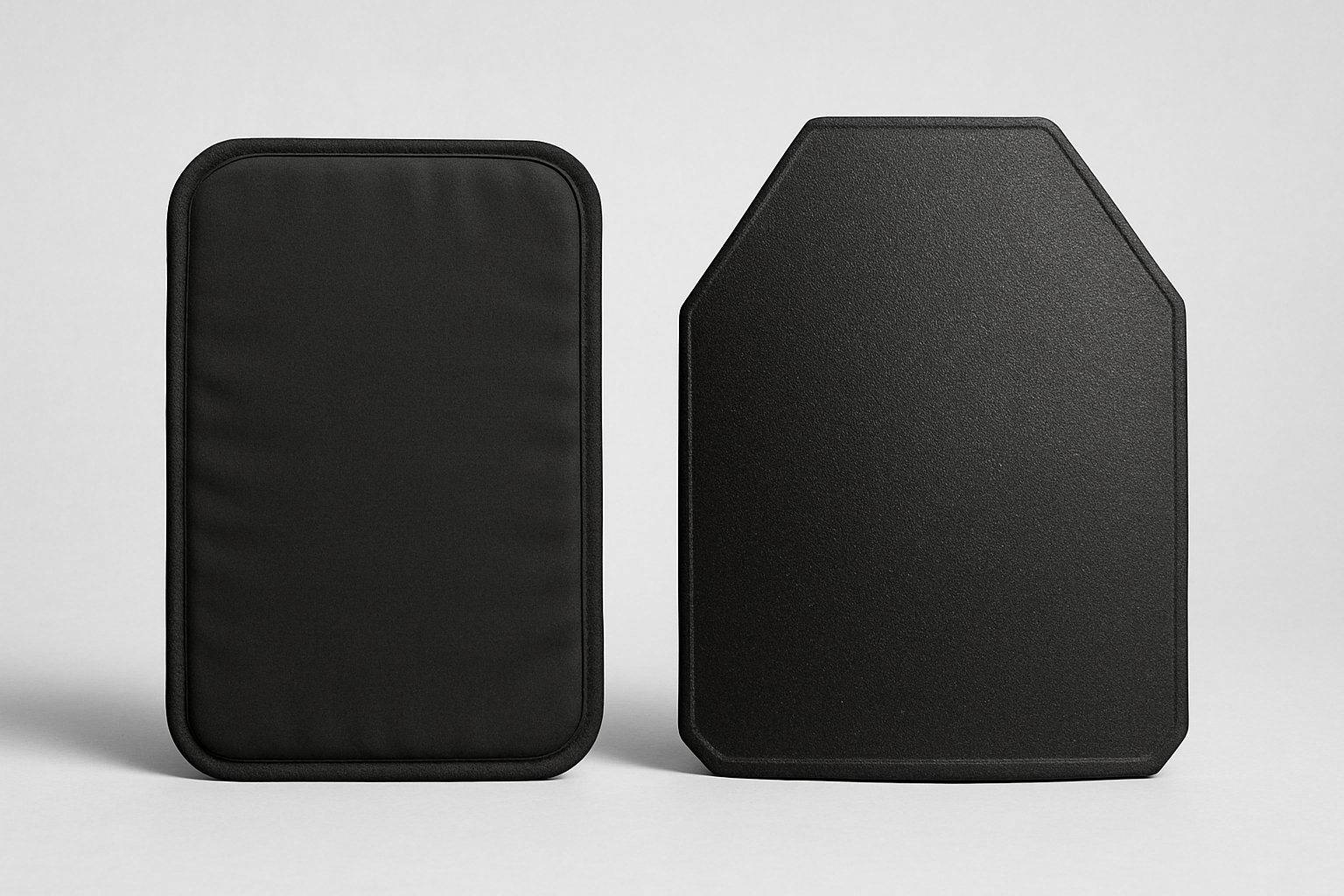In the world of personal protection, not all body armor is the same. One of the most common questions is what exactly distinguishes soft body armor from hard body armor. Both serve the same essential purpose of protecting the wearer from ballistic threats, yet they do so through completely different technologies. Understanding how each type works, which materials are used, and in which situations they perform best can help you make a well informed decision when selecting protective gear.
Soft Body Armor – Lightweight and Flexible Protection
Soft body armor is designed with comfort and mobility in mind. It is made from woven or laminated fibers that absorb and spread the energy of an impact. Unlike rigid plates, soft armor moves with the body, making it suitable for long hours of use under clothing or uniforms.
Common materials include aramid fibers such as Kevlar and Twaron, and ultra high molecular weight polyethylene fibers like Spectra, developed by Honeywell. These materials are known for their excellent strength to weight ratio and resistance to heat, moisture, and chemicals.
In 2025, Honeywell introduced the Solstice brand to represent its next generation of high performance fibers. Solstice materials continue to lead the security industry, offering outstanding ballistic resistance combined with flexibility and low weight.
Soft armor is primarily used for protection against handgun ammunition, knife attacks, and needle threats, depending on its design. It is favored by law enforcement, security professionals, and civilians who require discreet yet reliable protection without sacrificing movement.
Hard Body Armor – Maximum Protection Against High Velocity Threats
Hard body armor is engineered to stop rifle fire and high energy projectiles. Instead of flexible fibers, it uses rigid plates made from materials such as ceramic composites, aluminum oxide, silicon carbide, or solid UHMWPE. These plates are placed in carriers or tactical vests and are designed to deform or shatter incoming projectiles, absorbing their energy before they penetrate.
Because it is rigid and heavy, hard body armor offers higher protection levels but less comfort. It is typically worn by military personnel, tactical response units, and individuals operating in high risk areas where rifle fire is a concern.
Key Differences Between Soft and Hard Body Armor
| Feature | Soft Body Armor | Hard Body Armor |
|---|---|---|
| Protection level | Effective against handgun, knife, and spike threats | Designed for rifle and high velocity rounds |
| Material composition | Aramid fibers (Kevlar, Twaron) or UHMWPE (Spectra / Solstice) | Ceramic, composite, or hard polyethylene plates |
| Weight and flexibility | Lightweight, flexible, and comfortable | Heavy, rigid, and less comfortable |
| Wearability | Can be worn discreetly under clothing | Typically worn over clothing or in tactical carriers |
| Use case | Everyday protection for civilians and security professionals | Military and tactical operations |
Choosing the Right Armor for Your Needs
Selecting the right body armor depends on the environment and the level of threat you may face.
Those who need lightweight and discreet protection for daily use generally choose soft armor.
Those exposed to rifle fire or higher velocity threats rely on hard armor for enhanced protection.
Many professionals use a hybrid setup, wearing soft armor as a base layer with the option to insert hard plates when needed. This combination provides both comfort and the flexibility to adjust protection levels as situations change.
The Role of Advanced Materials in Modern Armor
Advancements in material science have revolutionized body armor over the last decades. Early generations of bullet resistant vests were heavy and restrictive, but today’s protective systems rely on fibers like Honeywell Solstice UHMWPE, Kevlar XP, and Twaron LFT SB to deliver exceptional strength and comfort.
These advanced fibers stop projectiles through energy dispersion and controlled deformation rather than simple resistance. This means that modern soft armor can achieve impressive stopping power at a fraction of the weight once required.
Conclusion
The difference between soft body armor and hard body armor comes down to flexibility, comfort, and the level of protection required. Soft armor provides mobility and discretion for everyday use, while hard armor delivers superior protection for high risk or tactical operations.
As technology continues to evolve, advanced materials like Solstice are shaping the next generation of protective equipment. They make armor lighter, stronger, and more comfortable, ensuring that protection no longer comes at the cost of performance or mobility. Understanding these distinctions allows anyone, from professionals to private users, to make confident and informed choices in personal protection.



Share:
Which Bulletproof Vest Do I Need as a Security Guard?